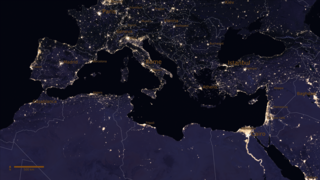Universe
ID: 30513
In January 2002, a red supergiant star named V838 Monocerotis expanded very quickly, heating the surrounding interstellar dust to extreme, glowing temperatures. This movie, created using eight images from the Hubble Space Telescope, reveals the dramatic changes observed between 2002 and 2006. A morphing sequence has been applied to create smooth, seamless transitions between images.
For reasons unknown, the star’s outer surface suddenly greatly expanded with the result that it became the brightest star in the entire Milky Way Galaxy. Although the star’s flash appears to expel material into space (like a supernova), what is actually seen is an outwardly moving light echo of the bright flash. In a light echo, rings of interstellar dust that already surround the star reflect light from the flash. The light echo spans about six light years in diameter. The star, which lies about 20,000 light-years away from Earth, presumably ejected the illuminated dust shells in previous outbursts. The star has some similarities to highly unstable aging stars called eruptive variables, which suddenly and unpredictably increase in brightness.
Hubble Sees Rare Stellar Light Echo
For More Information
Credits
Mark Malanoski (GST): Project Support
Please give credit for this item to:
ESA/ Hubble NASA's Goddard Space Flight Center/ESA
ESA/ Hubble NASA's Goddard Space Flight Center/ESA
Short URL to share this page:
https://svs.gsfc.nasa.gov/30513
Mission:
Hubble
Data Used:
Note: While we identify the data sets used in these visualizations, we do not store any further details nor the data sets themselves on our site.
Keywords:
SVS >> HDTV
SVS >> Hyperwall
SVS >> Hubble Space Telescope
SVS >> Astrophysics
SVS >> Star
NASA Science >> Universe
SVS >> Presentation
https://svs.gsfc.nasa.gov/30513
Mission:
Hubble
Data Used:
Hubble Space Telescope
Observed Data - 2002 to 2006Keywords:
SVS >> HDTV
SVS >> Hyperwall
SVS >> Hubble Space Telescope
SVS >> Astrophysics
SVS >> Star
NASA Science >> Universe
SVS >> Presentation











